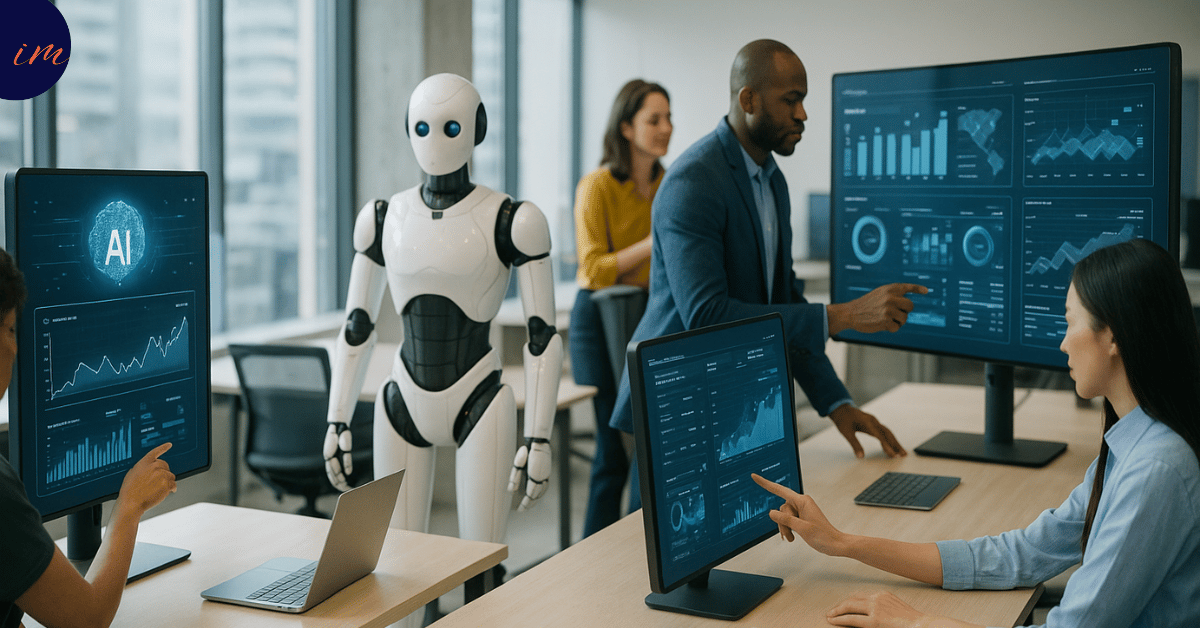Work is transforming at an extraordinary pace, fuelled by the relentless advance of intelligent automation and digital innovation. As organisations pursue digital transformation, seamless AI workplace integration is fast becoming the hallmark of future-ready businesses—reshaping roles, streamlining operations, and unlocking powerful new avenues for growth. Whether you’re leading a team, managing HR, or working on the frontline, understanding this shift is crucial for staying ahead.
This article reveals how intelligent automation is revolutionising the workplace, featuring up-to-the-minute trends, compelling case studies, and actionable strategies for successful implementation. By the end, you’ll be empowered with a clear roadmap for harnessing AI workplace integration and preparing your organisation for the digital future.
The Rise of AI Workplace Integration
AI workplace integration is more than a technological upgrade—it's a complete reimagining of how work gets done. In the past two years, the percentage of US employees using AI in their roles has nearly doubled, from 21% to 40%. Frequent AI use among white-collar professionals has surged to 27%, an increase of 12 percentage points since 2024. This momentum is driven by the realisation that automation can liberate teams from repetitive tasks, enabling them to focus on what truly matters: creativity, strategy, and human connection.
Digital working is now defined by dynamic collaboration between people and smart systems. As automation takes over routine processes, employees are free to innovate, solve problems, and deliver greater value.
How AI Is Transforming the Workplace
Automating Repetitive Tasks
Smart automation tools are revolutionising how businesses handle everyday tasks. From processing documents to managing customer queries, intelligent systems deliver speed and accuracy that were once unimaginable. By delegating repetitive work to automation, your team can concentrate on strategic initiatives and creative problem-solving.
For instance, JPMorgan Chase leverages automation to analyse contracts and financial documents, slashing review times from thousands of hours to mere seconds. This empowers legal teams to focus on high-impact strategy and risk management..
Supercharging Decision-Making and Productivity
Besides efficiency, automation empowers people and teams with actionable insights. Advanced analytics can sift through vast datasets, revealing trends and opportunities that would otherwise go unnoticed. In industries like healthcare and finance, smart systems are transforming everything from diagnostics to customer experience.
Siemens Healthineers, for example, uses intelligent assistants to support clinicians in interpreting complex data, leading to faster, more accurate diagnoses. Their AI-based predictive models help identify disease progression and support critical decision-making in clinical settings..
Creating New Roles and Skillsets
As automation takes over routine work, entirely new job categories are emerging. The ability to guide, curate, and refine outputs from smart systems is now a core workplace skill. Employees are spending less time starting from scratch and more time orchestrating and optimising automated tools.
The rise of "prompting" as a sought-after skill reflects this evolution. Those who can effectively direct intelligent systems are increasingly valuable, and forward-thinking organisations are investing in tailored, hands-on training to help their workforce thrive..
Best Practices for AI Workplace Integration
1. Align Automation with Strategic Goals
Before rolling out intelligent systems, clarify your business objectives. Automation should be a strategic enabler, not just a shiny new gadget. Align every initiative with your organisation's vision to maximise impact and ensure measurable results..
2. Foster a Culture of Adaptability
Success depends on buy-in and understanding at every level. Offer targeted training that equips your team with the skills to excel alongside automation. Encourage experimentation, empower champions within teams, and celebrate early wins to build momentum..
3. Build a Robust Data Foundation
Automation is only as effective as the data it draws upon. Prioritise data quality, governance, and security to eliminate bias and build trust. Ensure everyone understands how to handle data responsibly and safeguard sensitive information..
4. Start Small, Iterate, and Scale
Rather than attempting an overnight transformation, begin with pilot projects. Test solutions in real-world scenarios, learn from results, and scale up strategically. This approach minimises risk and ensures automation is tailored to your unique needs..
Real-World Success Stories
Ford Motor Company: By integrating smart robotics into manufacturing, Ford achieved a 15% improvement in cycle time and reduced injuries. Human workers now focus on quality control and complex assembly, while robots handle repetitive tasks.
Unilever: Intelligent video interviews have transformed recruitment, cutting screening time by 75% and saving over 50,000 hours in candidate interview time. The system also offers feedback to candidates, enhancing their experience and improving diversity in hiring..
IBM: "Watson," IBM's digital assistant, manages HR queries, reducing staff workload and boosting satisfaction. It also spots recurring issues, enabling HR to proactively address common concerns..
These examples showcase how AI workplace integration can drive efficiency, spark innovation, and elevate employee satisfaction.
Overcoming Challenges and Building Trust
Despite the benefits, integrating automation presents challenges. Only 15% of employees say their organisation has communicated a clear plan for integrating AI technology, highlighting a need for better communication and transparency. To build trust, leaders must champion openness and actively involve employees in the transformation.
Upskilling is essential—most employees aren't yet equipped to fully leverage intelligent systems. Internal training and clear policies can bridge this gap, ensuring a smooth transition and maximising the rewards of AI workplace integration..
The Future of Digital Working with AI
Looking ahead, AI workplace integration will continue to reshape the labour market. While automation will handle more routine tasks, uniquely human strengths—like creativity, empathy, and adaptability—will become even more valuable. The demand for digital and automation-focused skills will surge, and organisations that invest in upskilling will lead the way..
Automation will also accelerate innovation, revealing new business opportunities and enabling rapid responses to market shifts. The most successful companies will design workflows that amplify human ingenuity, using intelligent systems as partners—not replacements.
Conclusion
AI workplace integration is revolutionising digital working and shaping the future of work. By automating routine tasks, empowering smarter decisions, and creating new opportunities, intelligent systems are enabling organisations to achieve greater efficiency, innovation, and employee engagement. To thrive in this new era, prioritise a strategic approach, invest in workforce readiness, and cultivate a culture of trust and continuous learning.
Now is the moment to embrace the future. Assess your organisation’s readiness, seize opportunities for integration, and empower your teams to excel in tomorrow’s digital workplace.
FAQs
Q: What is AI workplace integration?
A: AI workplace integration means embedding intelligent automation and digital tools into business processes, enabling organisations to work smarter and more innovatively.
Q: How is automation changing the workplace?
A: Automation is streamlining repetitive tasks, boosting decision-making, and creating new roles. It allows employees to focus on high-value activities and drive productivity.
Q: What skills are essential for automation success?
A: Key skills include prompting, digital fluency, critical thinking, adaptability, and the ability to guide automated systems. Ongoing learning is vital for long-term success..
Q: How can organisations ensure successful automation adoption?
A: By aligning initiatives with business goals, delivering tailored training, developing sound data strategies, and fostering a culture of trust and experimentation..
Q: What are the risks of automation in the workplace?
A: Risks include data security, bias in outputs, and employee resistance. Clear policies, ongoing training, and transparent communication are key to overcoming these challenges..
📰 Enjoyed This Post?
Stay informed and ahead with our executive insights. Dig up the latest tools and strategies in business transformation. Subscribe to the newsletter.
Best wishes,
The Editorial Team
🌟🌟🌟

